From Midwest farmlands to the Pacific Coast, and the mountains and deserts in between, the Atchison, Topeka & Santa Fe Railway offers a buffet of modeling opportunities. This popular former Class I railroad has captured the hearts of model railroaders, and there are many modeling products and materials readily available to help modelers go “Santa Fe all the way” with their next layout build. If you’re looking for inspiration on exactly how to execute that build, look no further than these awe-inspiring track plans for a Santa Fe-themed layout, ranging from historical re-creations to freelance blueprints.
Cat Mountain & Santa Fe and Santa Fe Southern Div.
David Barrow’s HO scale, 13′-6″ x 19′-6″ Cat Mountain & Santa Fe models the Fourth District (Lubbock to Slaton, Texas) of the railroad’s Plains Division in 1978. This layout, inspired by the possibility of acquiring a Union Switch & Signal Co. TCS machine (Santa Fe-speak for a Centralized Traffic Control console), combines mainline running and switching with a strong emphasis on prototypical operations, despite necessary compression. For those interested in this concept, but with a change in scenery and scale, Rod Warren’s Santa Fe Southern Div. offers another alternative. Inspired by the Cat Mountain & Santa Fe, this layout is set in Kansas and Oklahoma, and is configured into N scale for ample running room for long trains of covered hoppers and container stacks.
Visit Model Railroader’s August and October 2009 issues for more information on the Cat Mountain & Santa Fe and the Santa Fe Southern Div., respectively.
Central California
This S scale, 27 x 39-foot layout features a shared representation with the Southern Pacific, but the Santa Fe still has a heavy presence. Single-track mainline railroading through California’s Central Valley, including impressive street running, is central to hauling agriculture between Sacramento and Fresno. Built in the niche S scale, the layout was designed to run Santa Fe equipment from different eras: steam-diesel transition (1955-1959) and the late 1970s-early 1980s.
Visit Model Railroader’s September 2013 issue for more information on the Central California layout.
New Mexico Division
Bob Foltz’s HO scale New Mexico Division is described as the “land of enchantment.” This massive 45′-7″ x 47′-8″ layout re-creates Glorieta Pass in 1951. Operating sessions are the main focus, featuring a mix of vast jobs and unique challenges. It includes a single-track main line, timetable and train-order operations, a helper district, steam and first-generation diesel locomotives, passenger traffic, plenty of industry for locals, and even an interchange with the narrow gauge Denver & Rio Grande Western at Santa Fe.
Visit Model Railroader’s June 2011 issue for more information on the New Mexico Division.
Albuquerque Division Third District
Similar to the New Mexico Division, Tom Thompson’s HO scale Albuquerque Division Third District pushes the boundaries in layout size and operation. This 50 x 50-foot layout hosts freight and passenger operations in 1953’s famous steam-to-diesel transition era, set in the vast open spaces of the Southwest. The setup also features a double-track main line with wide, sweeping curves, traversing both a lower and upper deck. Each deck includes its own massive staging yard, which Thompson emphasizes as crucial for large layouts of this type.
4th Street Spur
Industrial switching is the focus of this 1′-6″ x 8′-0″ HO scale shelf layout. Set in Los Angeles during the early 1950s, it captures the transition era, allowing for the use of readily available Santa Fe steam and diesel locomotives and rolling stock from the period. The 4th Street Spur also offers a valuable lesson for beginners from builder Dean Deis: connect with individuals and groups to build skills and resources.
Visit Model Railroader’s May 2024 issue for more information on the 4th Street Spur.
Santa Fe, 1951
The Santa Fe covered vast distances between the Midwest and Pacific Coast. Unless you have immense space, modeling hundreds or thousands of miles requires condensing and dividing scenes. Gary Hoover’s HO scale Santa Fe, 1951 layout achieves this with view blocks, creating the illusion of fitting the railroad’s Transcontinental main line onto a 24 x 49-foot plus 13 x 19-foot benchwork. Six isolated scenes include Chicagoland, Raton, N.M., Victorville, Summit, and San Bernardino, Calif.
Visit Model Railroader’s December 2011 issue for more information on the Santa Fe, 1951 layout.
Emerald Spring Division
While many Santa Fe track plans prioritize prototypical operations, Thomas Noblitt’s HO scale Emerald Spring Division (28′-6″ x 55′-0″) emphasizes scenic realism with a touch of freelancing. With models waiting to be run and a desire for mountains with abundant trees, Noblitt and his wife, Peggy, narrowed the location to Southern Colorado, with the main line connecting the fictional towns of Emerald Springs and Rocky Flats. There’s even a logging branch with steep grades. Despite being scenery-heavy, the layout is designed for easy access, featuring wide aisles, turnouts near the edge of the benchwork, and a single duckunder.
Visit Model Railroader’s May 2013 issue for more information on the Emerald Spring Division.





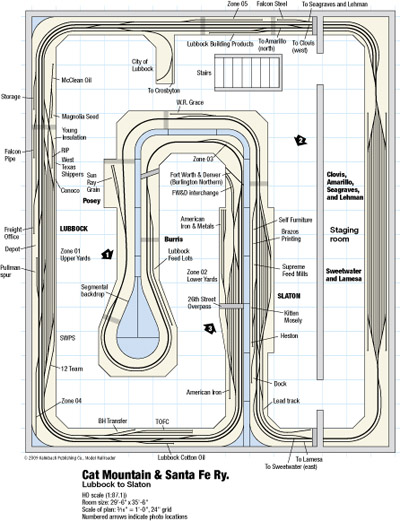
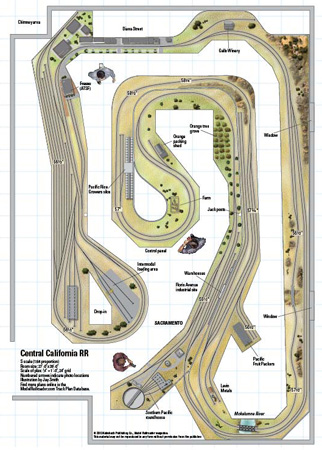
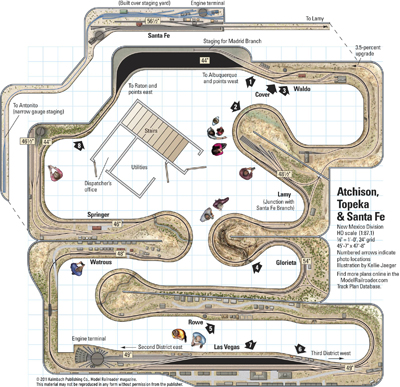
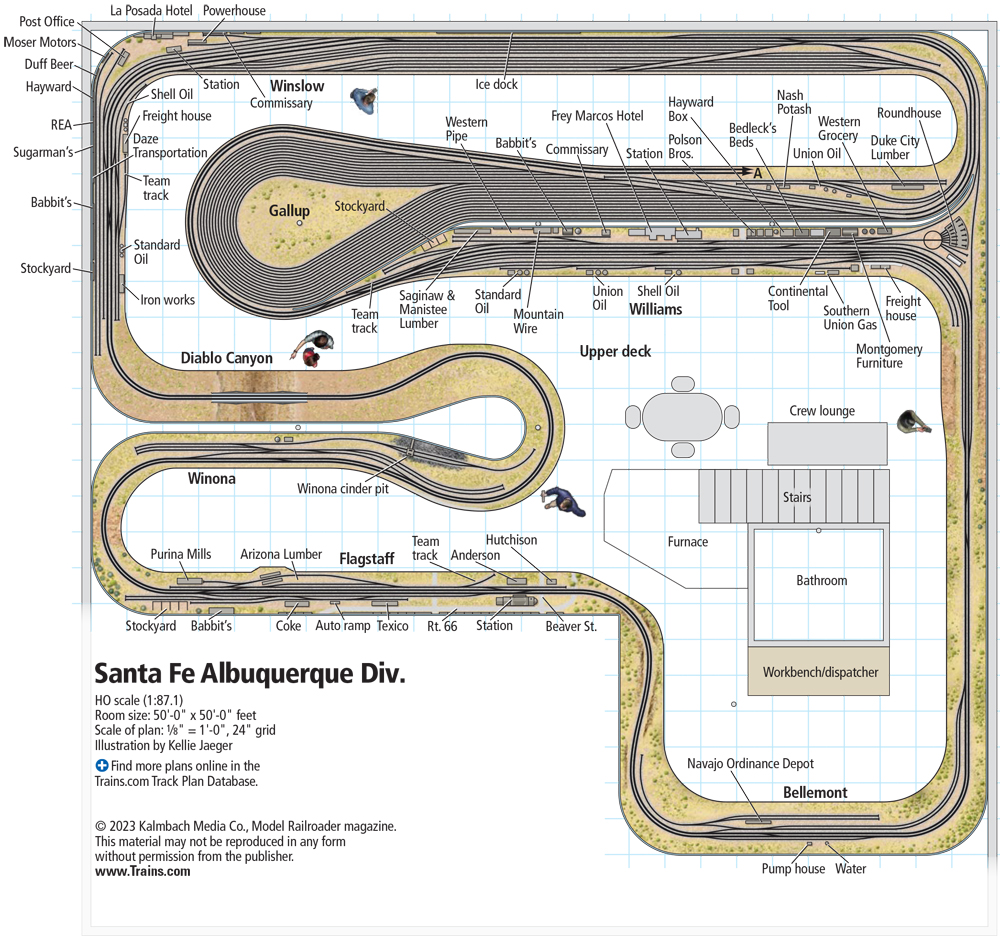
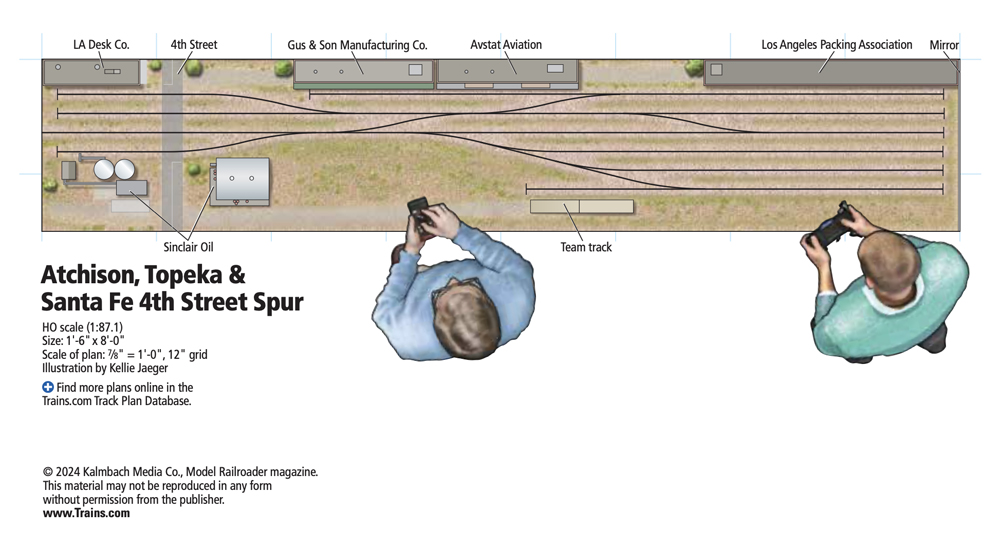

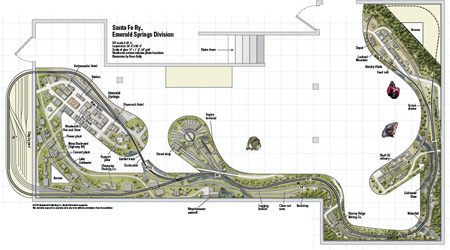


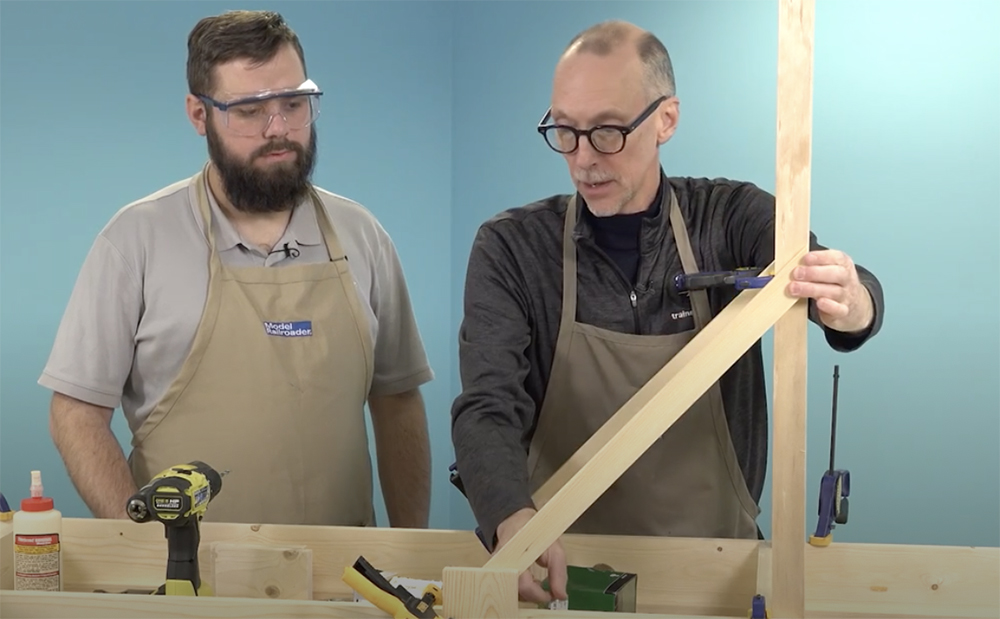
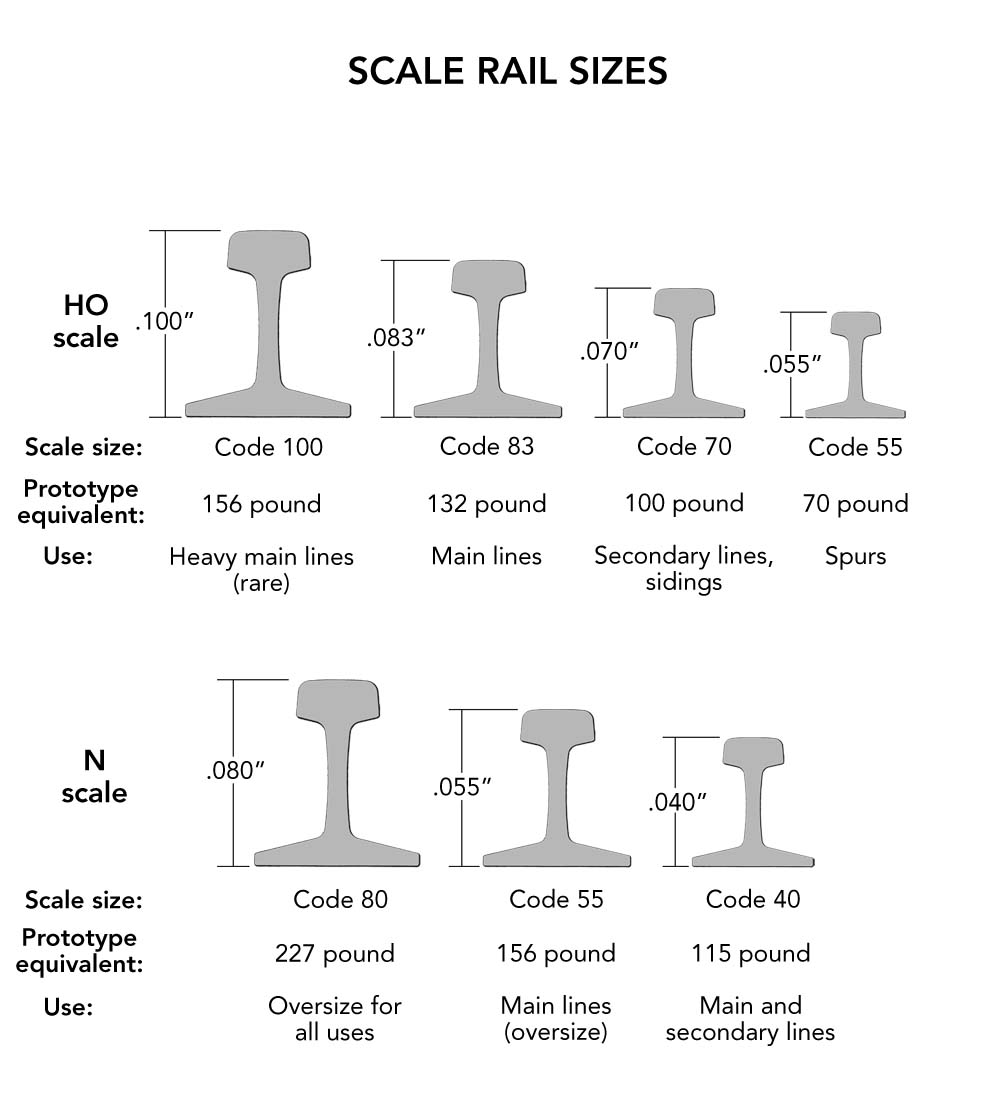
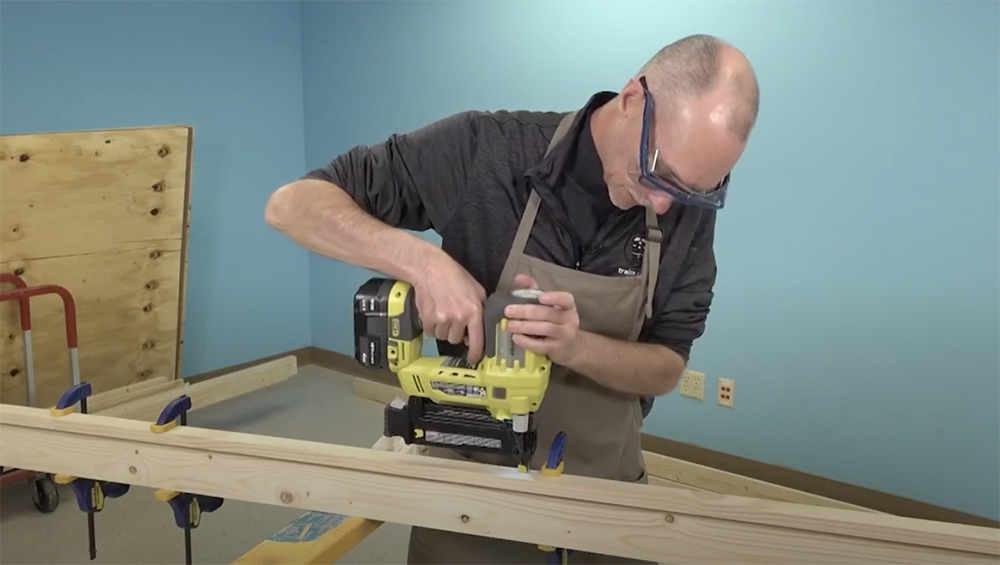


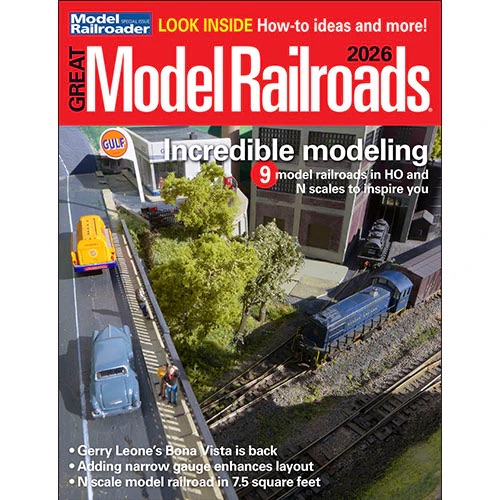
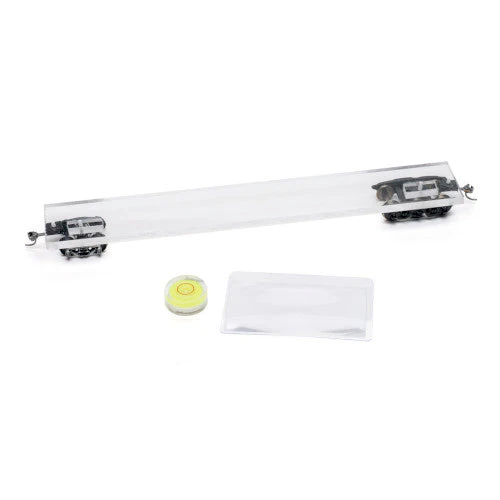
Uncle John Santa Fe would be proud of all these interpretations would’nt you agree Chico?